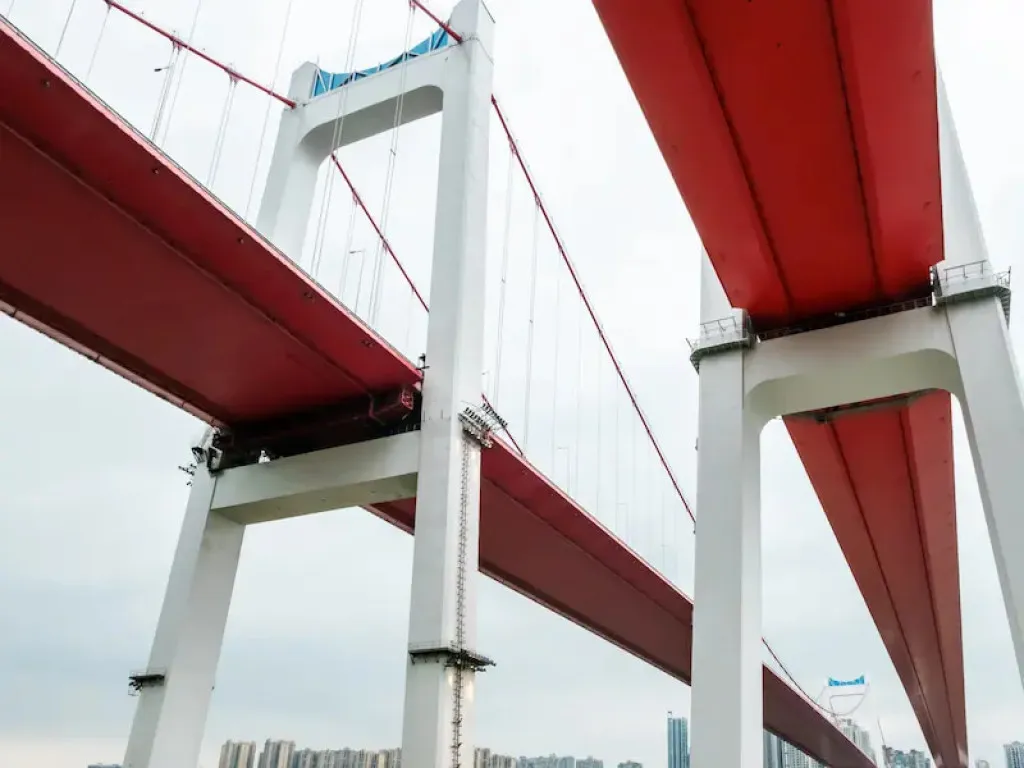A girder, sometimes referred to as a beam, is a critical component in bridge construction and other long-span structures. This horizontal structural element is designed to bear vertical loads, providing essential support. Girders are not only used in bridges but also in highways, flyovers, and similar large-scale constructions.
Typically made from materials such as steel, reinforced concrete, or reinforced wood, girders are positioned between two supports like abutments or piers. Their primary role is to ensure the stability and integrity of the structure.
Curious about what makes a girder effective? This article will delve into the specifications of a good girder, including its types, benefits, and potential drawbacks.
What Is a Girder?
A girder is a primary structural element used in the construction of buildings and bridges. In civil engineering and construction, a girder beam is a vital part that serves as the main supporting beam, distributing loads from other structural elements to columns or foundations.
Extremely strong materials like steel, reinforced concrete, or composite materials are what make a girder. allowing it to withstand large loads and ensure structural stability.
There are different types of girders based on their shape and usage. Common shapes include I-beams and T-beams, named after their cross-sectional profile. These shapes represent efficient use which can distribute loads while maintaining high rigidity and stability.
Functions of a Girder
From the previous explanation, we know that a girder can support heavy loads in construction, such as bridges. Here's a detailed explanation:
Supporting Vertical Loads
The primary function of a girder is to support large vertical loads, including dead loads (the structure's own weight) and live loads (occupants, furniture, vehicles, etc.). These vertical loads are distributed through the girder to columns or foundations.
Supporting Horizontal Loads
Besides vertical loads, girders must also withstand horizontal loads, such as wind pressure or seismic forces. This is crucial for maintaining the stability and structural integrity of buildings or bridges.
Connecting Pillars
Girders connect pillars or columns in a structure, acting as a connecting element to transfer loads between columns. This ensures that the load is evenly distributed and the structure remains stable.
Regulating Floor or Roof Levels
Girders also help regulate the height of floors or roofs in multi-story buildings. They determine the spacing and height between floors and maintain the overall strength of the building.
Read also: Advantages and Functions of Reinforced Concrete in Construction
Girder Specifications
The specifications of a girder vary depending on its requirements. Generally, a girder must be capable of supporting the load of a construction. Some common specifications include:
Dimensions
Dimensions of a girder include length, width, and height or depth. These dimensions are designed based on structural needs and the type of load to be supported. For instance, girders for large bridges will have larger dimensions than those used in residential buildings.
Strength and Durability
The materials and their structural design determine the strength and durability of a girder. Girders must withstand the maximum expected loads during the structure's lifespan without permanent deformation or damage. This includes factors like earthquakes, wind, and extreme temperatures.
Materials
Girders can be made from various materials, such as steel, reinforced concrete, and composites. The choice of material depends on factors like the required strength, usage location, and cost. Steel is often favorable for its strength and resistance to dynamic loads.
Shape
The shape of a girder can vary, such as I-beam, T-beam, box-shaped, or other forms. I and H shapes are the most popular types for their efficiency in load-bearing and structural rigidity.
Installation and Connection
Proper installation and connection are essential for ensuring structural integrity. Connections can use bolts, welding, or other fastening methods. The installation process must be carried out carefully to avoid errors that could weaken the structure.
Corrosion Resistance
Corrosion resistance is crucial, especially for girders used in open or humid environments. Materials like steel often use protective coatings or are specially processed to enhance corrosion resistance, such as galvanization or anti-corrosion paints.
Read also: 5 Building Materials for Earthquake-Resistant Construction
Types of Girders
There are several types of girders based on their shape, each chosen based on usage needs:
I-Girder
This type has a cross-sectional shape like the letter "I". The top and bottom parts are called flanges, and the middle part connecting them is called the web. This design is made from composite or non-composite materials and is popular in bridge construction in Indonesia.
U-Girder
U-Girder has a cross-sectional shape like the letter "U". It is popular for building bridges in narrow spaces. U-girders can easily withstand heavy loads and distribute them evenly, providing enough space for utilities such as pipes and cables.
T-Girder
T-Girder has a cross-sectional shape like the letter "T". It is common for floor and roof construction, where the top flange serves as a platform and the web provides structural support.
Box-Girder
Box-Girder has a box or rectangular cross-sectional shape. It offers optimal strength and good torsional stability. Box girders are often used in curved bridge construction and structures requiring strong support and high stability.
Read also: Understanding Various Types of Concrete in Construction and Their Functions
Advantages of Girder
Girders offer some advantages and below are some of them:
Flexibility
Girders are very flexible in construction and can be used in various projects, from building bridges to multi-story buildings. Additionally, girders can be customized to various architectural designs.
Load Distribution
Girders are designed to distribute loads evenly across the structure, reducing pressure on a single point and increasing overall stability.
Strength
Made from durable materials like steel and reinforced concrete, girders can withstand heavy loads and long spans without significant deformation.
Easy Maintenance
Once installed, girders are relatively easy to maintain. These structural elements are resistant to extreme weather conditions and corrosion if properly maintained, reducing long-term maintenance costs.
Disadvantages of Girder
Despite their advantages, girders also have some disadvantages, such as costs, complex design, weight, space requirements, and length limitations. Here are each of the explanations:
Costs
Manufacturing and installing girders can cost a lot, especially if you use high-quality materials like steel or pre-stressed concrete. This cost can be a barrier for projects with limited budgets.
Complex Design
Effective girder design requires complex and precise engineering calculations. Mistakes in design can be fatal and, therefore, it needs experienced expert professionals.
Weight
Girders are very heavy, particularly those made of steel or concrete. This weight can be a challenge during transportation and installation.
Space Requirements
Installing girders requires ample space, which can be a significant constraint in urban projects or limited spaces.
Length Limitations
Although girders are designed for long spans, there are practical limits to the maximum length that can be achieved. Very long spans require special solutions, such as using multiple girders or designing suspension bridges.
Girders are indispensable components in bridge construction, playing a pivotal role in supporting heavy loads and ensuring the structural stability of buildings and bridges.
To enhance your projects, consider using high-quality ready-mix concrete or precast from PT Motive Mulia, marketed under the brand name Beton Merah Putih. Renowned for its superior quality, Beton Merah Putih is produced with advanced equipment, handled by skilled professionals, and crafted using the finest resources.
Whether you require precast or ready-mix concrete in various shapes, types, or sizes, Beton Merah Putih can meet your specific construction needs. When it comes to selecting top-tier concrete, Beton Merah Putih is your reliable partner in construction.
For more information or to inquire about Beton Merah Putih products, please reach out via our contact form.
Read also: 3 Benefits of Using Precast Concrete




